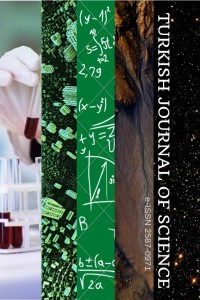Abstract
References
- Reference1 M. Barletta, V. Tagliaferri, F. Trovalusci, F. Veniali, A. Gisario, The mechanisms of material removal in the fluidized bed machining (FBM) of polyvinyl chloride (PVC) substrates, Journal of Manufacturing Science and Engineering, 2013, 135(1): 011003-1-14 DOI: 10.1115/1.4007956
- Reference2 C. Huang, X. Ma, M. Wang, Y. Sun, C. Zhang, H. Tong, Property of the PVC Dust Collecting Plate Used in Wet Membrane Electrostatic Precipitator, IEEE Transactions on Plasma Science, 2014, 42(11), 3520-3528
- Reference 3 V. Belaud, S. Valette, G. Stremsdoerfer, B. Beaugıraud, E. Audouard, And S. Benayoun, Femtosecond Laser Ablation of Polypropylene: A Statistical Approach of Morphological Data, Scanning 2014, Vol. 36, 209–217
- Reference4 S. Lazare, J. Lopez, F.Weisbuch, High-aspect-ratio microdrilling in olymericmaterials with intense KrF laser radiation, Appl. Phys. 1999, A 69 [Suppl.], S1–S6
- Reference5 S. Lazare And V. Tokarev, Recent Experimental and Theoretical Advances in Microdrilling of Polymers with Ultraviolet Laser Beams, Fifth International Symposium on Laser Precision Microfabrication, Proceedings of SPIE 2004, Vol. 5662, 221-231.
- Reference6 T. Canel, A.U. Kaya, B. Celik, Parameter optimization of nanosecond laser for microdrilling on PVC by Taguchi method, Optics Laser Technology, 2012, 44; 2347-2353
- Reference7 T. Canel, E. Kayahan, L. Candan, S. Fidan, T. Sınmazc¸elik, Influence of laser parameters in surface texturing of polyphenylene sulfide composites, J. Appl. Polym. Scı. 2019, Doi: 10.1002/App.47976
- Reference8 T. Canel, M. Zeren, T. Sınmazcelik, Laser parameters optimization of surface treating of Al 6082-T6 with Taguchi method, Optics Laser Technology, 2019, 120; 105714
- Reference9 T. Canel, I. Baglan, T. Sinmazcelik, Mathematical modelling of laser ablation of random oriented short glass fiber reinforced Polyphenylene sulphide (PPS) polymer composite. Optics Laser Technology, 2019, 115; 481-486
- Reference10 T. Canel, I. Baglan, T. Sınmazc¸elik, Mathematical modeling of heat distribution on carbon fiber Poly(etherether-ketone) (PEEK) composite during laser ablation, Optics Laser Technology, 2020, 127; 106190
- Reference11 T. Canel, I. Baglan, Mathematical Modelling of One Dimensional Temperature Distribution As A Function Of Laser Intensity On Carbon Fıber Reinforced Poly(Ether-Ether-Ketone)-(Peek) Composite, TWMS J. App. and Eng. Math. 2020, V.10, N.3, pp. 769-777
Abstract
In recent years, the use of polymer-based materials is in almost every aspect of daily life [1].
PMMA can be used in many areas from aircraft to the medical industry with its good chemical stability,
high strength, high corrosion and aging resistance, insulation performance, and smooth surface [2]. In this
study, grooves were formed on Polymethyl Methacrylate (PMMA) Plates with different scanning speeds
withCO2laser. Since the scan speed of the laser is increased, the interaction time between the laser beam and
the material decreases then the amount of energy transferred to the material also decreases. Measurements
were made from high-resolution optical microscope images of the grooves created on PMMA. In this
study, the distribution of heat energy transferred to the material was modeled mathematically. The change
to groove size depending on the laser scan speed is modeled. To validate the mathematical model, the
surfaces of the PMMA plate were ablated with different scan speed at constant power. The CO2 laser that
has 10600 nm wavelengths and 130Watts maximum power was used in the ablation.
References
- Reference1 M. Barletta, V. Tagliaferri, F. Trovalusci, F. Veniali, A. Gisario, The mechanisms of material removal in the fluidized bed machining (FBM) of polyvinyl chloride (PVC) substrates, Journal of Manufacturing Science and Engineering, 2013, 135(1): 011003-1-14 DOI: 10.1115/1.4007956
- Reference2 C. Huang, X. Ma, M. Wang, Y. Sun, C. Zhang, H. Tong, Property of the PVC Dust Collecting Plate Used in Wet Membrane Electrostatic Precipitator, IEEE Transactions on Plasma Science, 2014, 42(11), 3520-3528
- Reference 3 V. Belaud, S. Valette, G. Stremsdoerfer, B. Beaugıraud, E. Audouard, And S. Benayoun, Femtosecond Laser Ablation of Polypropylene: A Statistical Approach of Morphological Data, Scanning 2014, Vol. 36, 209–217
- Reference4 S. Lazare, J. Lopez, F.Weisbuch, High-aspect-ratio microdrilling in olymericmaterials with intense KrF laser radiation, Appl. Phys. 1999, A 69 [Suppl.], S1–S6
- Reference5 S. Lazare And V. Tokarev, Recent Experimental and Theoretical Advances in Microdrilling of Polymers with Ultraviolet Laser Beams, Fifth International Symposium on Laser Precision Microfabrication, Proceedings of SPIE 2004, Vol. 5662, 221-231.
- Reference6 T. Canel, A.U. Kaya, B. Celik, Parameter optimization of nanosecond laser for microdrilling on PVC by Taguchi method, Optics Laser Technology, 2012, 44; 2347-2353
- Reference7 T. Canel, E. Kayahan, L. Candan, S. Fidan, T. Sınmazc¸elik, Influence of laser parameters in surface texturing of polyphenylene sulfide composites, J. Appl. Polym. Scı. 2019, Doi: 10.1002/App.47976
- Reference8 T. Canel, M. Zeren, T. Sınmazcelik, Laser parameters optimization of surface treating of Al 6082-T6 with Taguchi method, Optics Laser Technology, 2019, 120; 105714
- Reference9 T. Canel, I. Baglan, T. Sinmazcelik, Mathematical modelling of laser ablation of random oriented short glass fiber reinforced Polyphenylene sulphide (PPS) polymer composite. Optics Laser Technology, 2019, 115; 481-486
- Reference10 T. Canel, I. Baglan, T. Sınmazc¸elik, Mathematical modeling of heat distribution on carbon fiber Poly(etherether-ketone) (PEEK) composite during laser ablation, Optics Laser Technology, 2020, 127; 106190
- Reference11 T. Canel, I. Baglan, Mathematical Modelling of One Dimensional Temperature Distribution As A Function Of Laser Intensity On Carbon Fıber Reinforced Poly(Ether-Ether-Ketone)-(Peek) Composite, TWMS J. App. and Eng. Math. 2020, V.10, N.3, pp. 769-777
Details
| Primary Language | English |
|---|---|
| Journal Section | Volume V Issue III 2020 |
| Authors | |
| Publication Date | December 30, 2020 |
| Published in Issue | Year 2020 Volume: 5 Issue: 3 |


